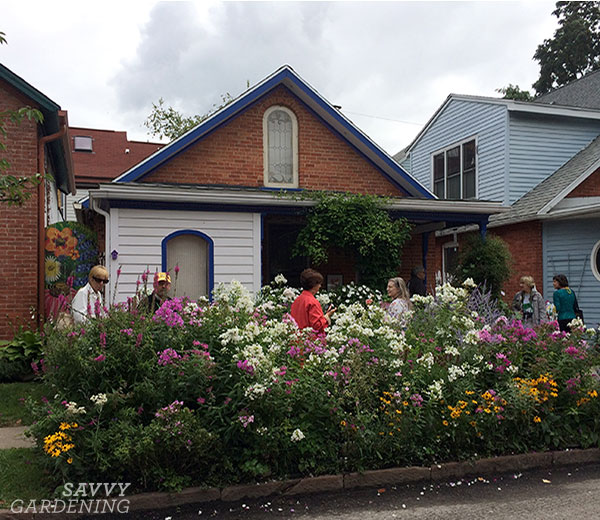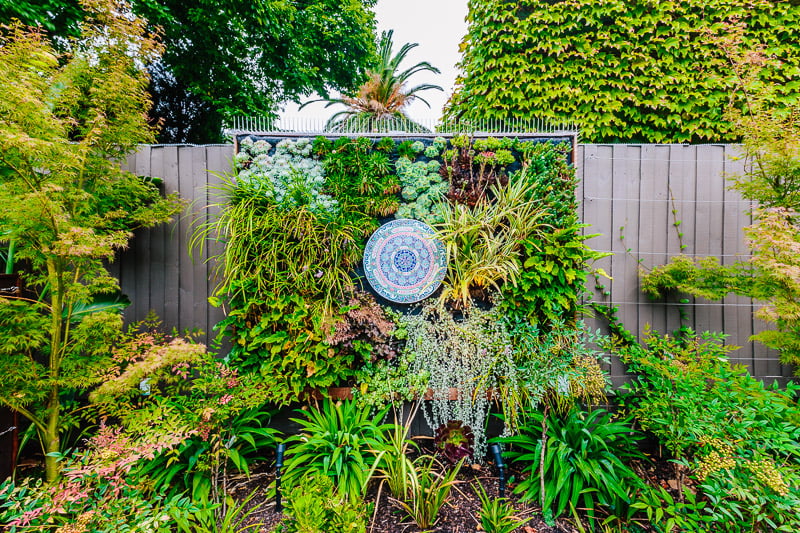In “The Ultimate Guide To Vertical Gardening,” you will discover everything you need to know about creating your own lush and thriving vertical garden. From selecting the perfect plants to maximizing limited space, this comprehensive guide will walk you through the step-by-step process of designing and maintaining a stunning vertical garden. Whether you’re a seasoned green thumb or a beginner gardener, this article will equip you with the knowledge and inspiration to transform any bare wall or empty corner into a vibrant and productive oasis of greenery.
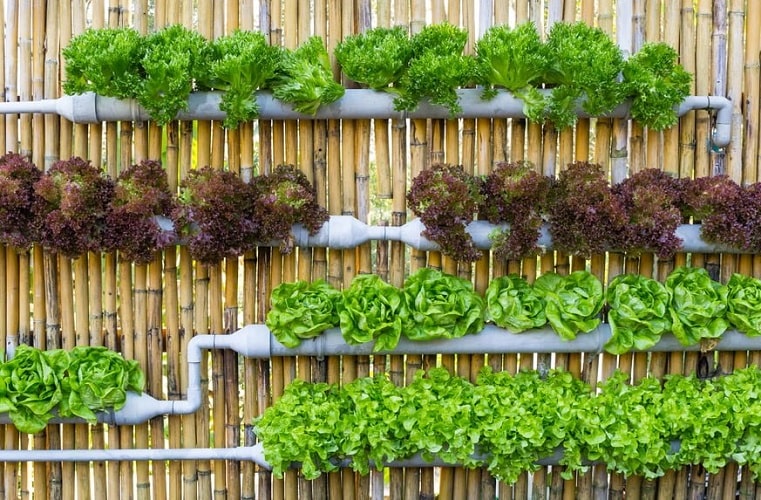
This image is property of gardensnursery.com.
Benefits of Vertical Gardening
Frees up valuable space
One of the most significant advantages of vertical gardening is that it frees up valuable space. Whether you have a small backyard or a limited balcony, vertical gardening allows you to maximize your growing area without taking up excessive ground space. By utilizing walls, fences, or even hanging structures, you can grow a wide variety of plants without sacrificing your precious outdoor space.
Increases yield
Vertical gardening has the potential to significantly increase your yield, enabling you to grow more plants in a limited area. By utilizing vertical space, you can create multiple tiers or levels of plantings, effectively multiplying your garden’s growing capacity. This means you can grow a greater number of fruits, vegetables, herbs, or flowers, allowing you to enjoy a bountiful harvest even in a small garden.
Improves air quality
Another benefit of vertical gardening is its positive impact on air quality. Plants have the incredible ability to absorb carbon dioxide and release oxygen, helping to purify the surrounding air. By growing a vertical garden, you can introduce more plants into your outdoor or indoor space, thus increasing the amount of oxygen and improving the overall quality of the air you breathe.
Reduces pest and disease problems
Vertical gardening can also help reduce pest and disease problems. When plants are grown vertically, they are lifted off the ground, minimizing the risk of soil-borne diseases and pests. Additionally, the vertical structure allows for better airflow around the plants, reducing the chances of fungal infections and other disease issues. By strategically placing your plants in a vertical garden, you can create a more favorable environment that deters pests and promotes healthier plant growth.
Getting Started with Vertical Gardening
Choosing a location
When starting a vertical garden, selecting the right location is crucial. Consider the amount of sunlight your chosen area receives throughout the day. Most plants require at least six hours of direct sunlight, so choose a location that meets this requirement. Additionally, ensure that the spot is easily accessible for watering and maintenance purposes.
Determining the type of vertical garden
Vertical gardening offers a range of options, and determining the type of vertical garden you want to create is an important step. Container gardens are versatile and can be placed on platforms or suspended from walls. Living walls are great for creating a stunning visual display, utilizing panels or frames to hold the plants. Trellises and arbors are ideal for climbing plants, while pallet gardens repurpose wooden pallets for vertical planting. Hanging baskets and pots are perfect for smaller spaces or balconies.
Preparing the structure
Once you have decided on the type of vertical garden, it’s time to prepare the structure. If you are building your own structure, gather the necessary tools and materials, such as wood, screws, and brackets, depending on the design you have chosen. If you opt for store-bought options, ensure that the structure is sturdy and suitable for the weight of the plants you intend to grow.
Selecting plants
Choosing the right plants for your vertical garden is essential. Consider the sunlight requirements of each plant and match them to the available light in your chosen location. Some plants require full sun, while others tolerate shade. Additionally, take into account the size and weight of the plants, ensuring that the structure can adequately support them as they grow.
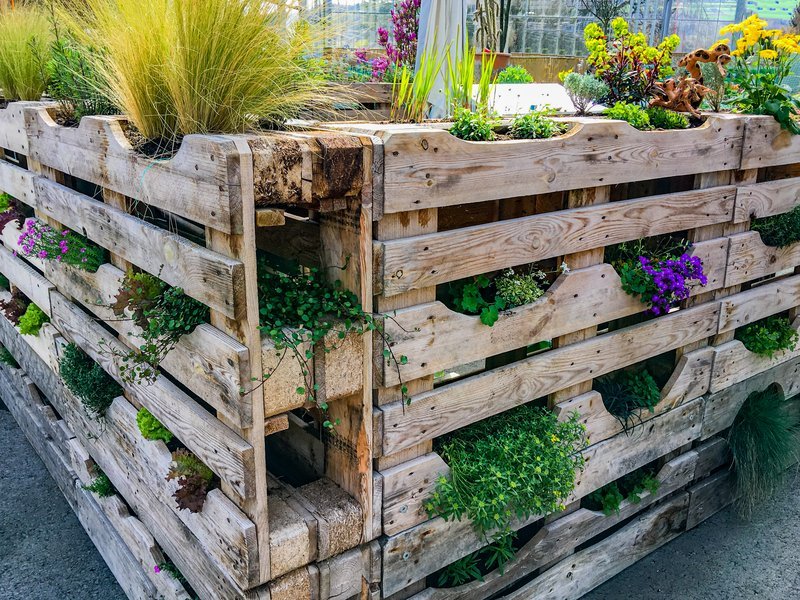
This image is property of naturezedge.com.
Types of Vertical Gardens
Container Gardens
Container gardens are one of the most popular types of vertical gardens. They allow for flexibility in terms of placement and can be easily moved if needed. Choose containers of various sizes and materials, such as plastic, ceramic, or terracotta, depending on your preference and the overall aesthetics of your garden. Ensure that the containers have adequate drainage holes to prevent waterlogging and root rot.
Living Walls
Living walls, also known as green walls, are vertical gardens that utilize panels or frames to hold plants. These walls not only provide a stunning visual display but also offer numerous environmental benefits. Living walls can be created using a variety of materials, including modular systems, felt pockets, or even repurposed items like wooden pallets. When creating a living wall, ensure that the chosen structure is sturdy and capable of supporting the weight of the plants and the additional soil or growing medium.
Trellises and Arbors
Trellises and arbors are perfect for climbers and vining plants. They provide vertical support for these plants and allow them to grow upward, saving ground space. Trellises and arbors come in a variety of designs and materials, such as wood, metal, or even recycled materials like bamboo. When installing a trellis or arbor, make sure it is securely anchored in the ground and can withstand the weight of the plants as they grow.
Pallet Gardens
Pallet gardens are an excellent choice for those who want to repurpose wooden pallets and create a vertical garden. They are easy to build and provide multiple planting pockets for various plants. When using wooden pallets, ensure that they are clean and free from any potentially harmful chemicals. Vertical pallet gardens can be placed against a wall or even freestanding, depending on your available space and preference.
Hanging Baskets and Pots
Hanging baskets and pots are a classic choice for vertical gardening, particularly in smaller spaces or balconies. They are versatile and can be suspended from walls, railings, or overhead structures. When selecting hanging baskets or pots, choose ones that have sufficient drainage holes to prevent overwatering and waterlogged soil. Consider the weight of the plants and ensure that the chosen support structure can safely hold them.
Choosing Plants for Vertical Gardening
Considerations for plant selection
When choosing plants for your vertical garden, several considerations come into play. First, consider the amount of sunlight your chosen location receives. Some plants thrive in full sun, while others prefer shade. Additionally, factor in the height of the plants and how they will fit within your vertical structure. You may want to consider a variety of plants that offer different textures, colors, and growth habits to create a visually appealing and diverse vertical garden.
Suitable vegetables for vertical gardening
Many vegetables thrive in vertical gardens, making them an excellent choice for homegrown produce. Some vegetables that are well-suited for vertical gardening include tomatoes, cucumbers, beans, peas, and various leafy greens like lettuce and spinach. These plants can be trained to grow upward and provide a bountiful harvest within a limited space.
Herbs and flowers suitable for vertical gardening
Vertical gardening also offers the opportunity to grow an array of herbs and flowers. Herbs like basil, parsley, thyme, and mint can be grown in container gardens, living walls, or hanging baskets. Flowers such as petunias, geraniums, pansies, and trailing varieties like nasturtiums add color and intrigue to vertical gardens. Choose herbs and flowers that suit your climate and the available sunlight in your chosen location.
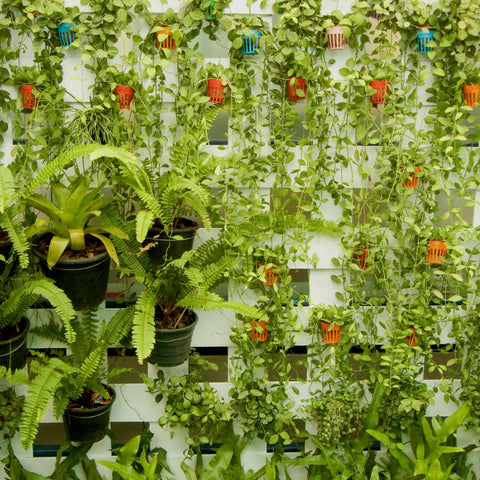
This image is property of cdn.shopify.com.
Building and Installing a Vertical Garden
DIY or store-bought options
When it comes to building and installing a vertical garden, you have the option of DIY or store-bought solutions. If you enjoy hands-on projects and have basic carpentry skills, building your own vertical garden structure can be a rewarding experience. This allows you to customize the design and size of the structure to suit your specific needs. However, if you prefer a more convenient approach, there are various pre-made vertical garden systems available in the market, offering easy installation and ready-to-use structures.
Tools and materials needed
If you decide to build your own vertical garden, you will need a few tools and materials. Depending on the design, these may include a saw, drill, screws, brackets, wood, hardware cloth, or other relevant elements. Ensure that you have the necessary safety equipment, such as gloves and goggles, when working with tools and materials. If you opt for a store-bought vertical garden system, carefully read the instructions and gather any additional tools or accessories required.
Step-by-step instructions for building
When building a vertical garden, it’s helpful to follow step-by-step instructions to ensure a successful outcome. Begin by measuring and marking the area where the vertical garden structure will be installed. Prepare the necessary materials and tools, then proceed with constructing the framework according to your chosen design. Secure all components firmly and ensure the structure is level and stable. Once the framework is complete, add any additional elements such as shelves or planting pockets, and make sure they are securely attached. Finally, prepare the planting area by adding soil or a suitable growing medium and proceed to plant your selected plants.
Installation methods
Installing a vertical garden depends on the chosen type and structure. Container gardens can be placed on platforms, shelves, or suspended from hooks or brackets. Living walls often require mounting to walls or frames, following the instructions provided by the manufacturer or creator of the system. Trellises and arbors need to be anchored into the ground, ensuring stability and proper support for climbing plants. Pallet gardens can be placed against a wall or freestanding, based on your available space. Hanging baskets and pots require sturdy hooks or hangers to support their weight.
Maintaining a Vertical Garden
Watering
Proper watering is crucial for maintaining a healthy vertical garden. Check the moisture levels of the soil regularly and water the plants as needed. Vertical gardens may require more frequent watering compared to traditional gardens due to increased exposure to air and sunlight. Consider using a drip irrigation system or installing self-watering containers to aid in consistent and efficient watering. Additionally, be mindful of drainage to prevent waterlogging, as excessive moisture can lead to root rot and other plant-related issues.
Fertilizing
Fertilizing your vertical garden is essential to ensure the plants receive an adequate supply of nutrients. Use a well-balanced, slow-release fertilizer or organic compost to provide the necessary nourishment for plant growth. Follow the recommended dosage and apply the fertilizer according to the specific requirements of the plants you have chosen. Regular fertilization, combined with proper watering, will promote healthy foliage, robust blooms, and abundant harvests.
Pruning and training
Pruning and training are important maintenance tasks for vertical gardens, especially for plants that tend to grow vigorously or require support. Regularly remove dead or damaged leaves, stems, or flowers to maintain overall plant health and aesthetics. Additionally, train climbing plants to grow along the designated support structures, ensuring they are properly secured and guided. Pruning and training will help your vertical garden maintain a neat and organized appearance, as well as maximize the available growing space.
Pest and disease management
Despite the benefits of vertical gardening in reducing pest and disease problems, it is still essential to monitor and manage any potential issues. Inspect your plants regularly for signs of pests, such as aphids, slugs, or caterpillars, and take appropriate measures to control their populations. Organic insecticides or insecticidal soaps can be used to manage pests, while natural remedies like companion planting or introducing beneficial insects can help prevent infestations. Additionally, be vigilant in identifying and treating any plant diseases, such as fungal or bacterial infections, to prevent further damage to your vertical garden.
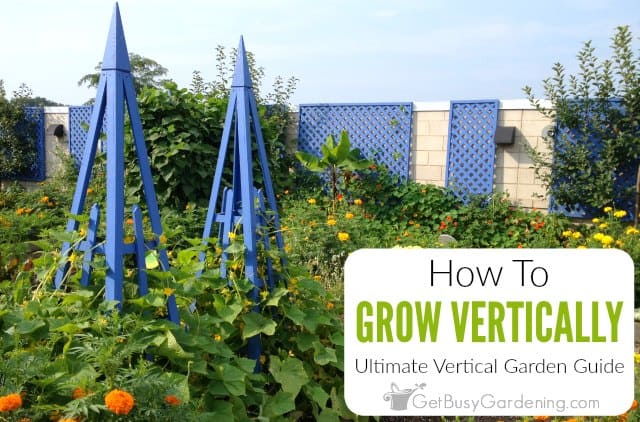
This image is property of k2j4u5m5.stackpathcdn.com.
Creative Ideas for Vertical Gardening
Vertical herb garden in the kitchen
Vertical gardening is not limited to outdoor spaces. One creative idea is to create a vertical herb garden in your kitchen. Utilize wall-mounted herb planters or hanging baskets to grow an array of culinary herbs. This not only provides easy access to fresh herbs for cooking but also adds a decorative element to your kitchen decor.
Vertical vegetable garden on a balcony
If you have a balcony or limited outdoor space, consider creating a vertical vegetable garden. Use hanging baskets or container gardens attached to the railing to grow an assortment of vegetables, such as cherry tomatoes, peppers, or herbs like basil and mint. This allows you to enjoy homegrown produce even in a small urban setting.
Vertical flower garden on a fence
Transform a plain fence into a vertical flower garden by using hanging pots, planters, or living wall panels. Choose a variety of colorful flowers that complement each other and hang them at different heights for an eye-catching display. This creative idea adds beauty and charm to any outdoor space, whether it be a backyard, patio, or balcony.
Vertical Gardening Tips and Tricks
Choosing the right structure and supports
When selecting a structure for your vertical garden, consider its durability, weight-bearing capacity, and compatibility with the plants you intend to grow. Sturdy materials like metal or pressure-treated wood are excellent choices. Additionally, ensure that the chosen supports are securely anchored and capable of withstanding wind and weather conditions, especially for outdoor vertical gardens.
Proper watering techniques
Vertical gardens may require slightly different watering techniques compared to traditional gardens. Due to increased exposure to air and sunlight, vertical gardens can dry out faster. It’s essential to water your plants thoroughly and monitor the moisture levels regularly. Drip irrigation systems or self-watering containers can help provide consistent moisture to the plants, reducing the risk of under or overwatering.
Using companion planting principles
Utilize companion planting principles to maximize the benefits of your vertical garden. Certain plants have natural repellent properties that can help deter pests. For example, planting marigolds alongside vegetables can help repel aphids and nematodes. Additionally, consider intercropping flowering plants amongst your vegetable or herb plants to attract pollinators and beneficial insects, which can enhance overall pest control and pollination within your vertical garden.
Choosing the right soil and fertilizers
Selecting the appropriate soil and fertilizers is crucial for the success of your vertical garden. Use a well-draining potting mix or a soil blend specifically formulated for container or vertical gardening. These mixes provide adequate drainage while retaining moisture and nutrients. Additionally, choose fertilizers that are suited to the specific nutritional needs of your plants. Organic fertilizers, such as compost or vermicompost, are excellent choices for promoting long-term soil fertility.
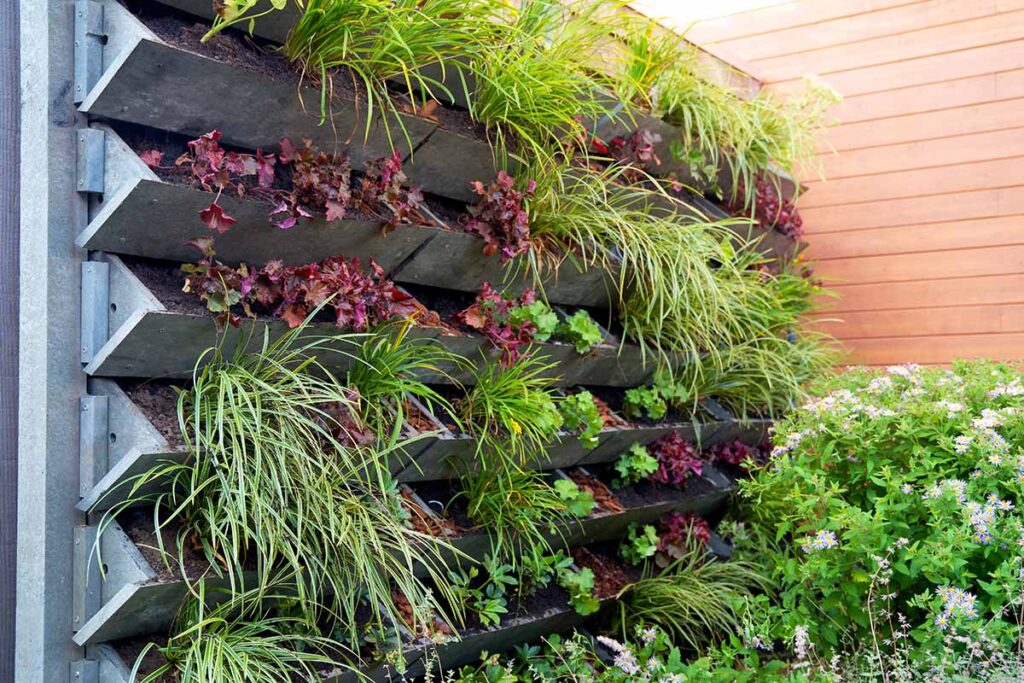
This image is property of gardenerspath.com.
Common Mistakes to Avoid in Vertical Gardening
Overcrowding plants
One common mistake in vertical gardening is overcrowding plants. It’s essential to consider the space requirements and growth habits of each plant when planning and planting your vertical garden. Avoid overcrowding to ensure proper air circulation, light penetration, and access for maintenance. Giving each plant sufficient space to grow will result in healthier plants and a more visually appealing vertical garden.
Not providing adequate support
Another mistake to avoid is not providing adequate support for your vertical garden plants. Ensure that the chosen structure and supports can handle the weight of the plants as they grow and mature. Weak or insufficient support can lead to bending, breakage, or even complete failure of the vertical garden structure. Regularly inspect and reinforce the supports if necessary to ensure the stability and longevity of your vertical garden.
Neglecting proper watering and drainage
Proper watering and drainage are vital aspects of vertical gardening. Neglecting these can lead to root rot, waterlogging, and other plant health issues. Avoid overwatering or underwatering your plants by monitoring the soil moisture levels and adjusting your watering schedule accordingly. Additionally, ensure that your vertical garden structure has adequate drainage to prevent excess water from accumulating and causing damage to the plants.
Failing to consider sunlight exposure
Sunlight exposure is critical for the success of your vertical garden. Failing to consider the amount of sunlight your chosen location receives can result in poor plant growth, reduced yield, or even plant death. Before selecting plants or installing your vertical garden, assess the sunlight levels in the area throughout the day. Choose plants that thrive in the available light conditions to ensure they receive the necessary energy for photosynthesis and growth.
Case Study: Successful Vertical Gardening Projects
Urban vertical garden in a limited space
In a small urban apartment with limited outdoor space, a successful vertical garden was created using a combination of hanging baskets and living wall panels. The hanging baskets were filled with herbs and trailing flowers, while the living wall panels housed a variety of colorful foliage plants. The vertical garden not only added an aesthetic element to the apartment balcony but also provided fresh herbs and greens for cooking, all within a limited footprint.
Vertical vegetable garden in an apartment building
A group of apartment dwellers came together to transform their shared rooftop space into a flourishing vertical vegetable garden. Utilizing trellises, arbors, and container gardens, they grew a diverse range of vegetables, including tomatoes, peppers, cucumbers, and herbs. The vertical garden not only provided a sense of community but also allowed everyone to enjoy the experience of growing their own food in an urban setting.
Creative vertical garden in a small backyard
In a small backyard with limited ground space, a creative vertical garden was established using repurposed pallets and container gardens. The wooden pallets were transformed into vertical planting walls, while the container gardens were strategically placed on shelves and platforms attached to the existing fence. The vertical garden featured a variety of flowers, herbs, and vegetables, creating a lush and vibrant environment despite the limited space available.
Vertical gardening offers numerous benefits, from freeing up valuable space to increasing yield and improving air quality. By choosing the right location, determining the type of vertical garden, preparing the structure, and selecting suitable plants, anyone can get started with vertical gardening. Maintaining a vertical garden involves proper watering, fertilizing, pruning, and pest management. With some creativity and careful planning, vertical gardening can be adapted to different settings, such as kitchens, balconies, and fences. By following tips and avoiding common mistakes, it is possible to create successful vertical gardening projects and enjoy the rewards of a beautiful and productive garden.




